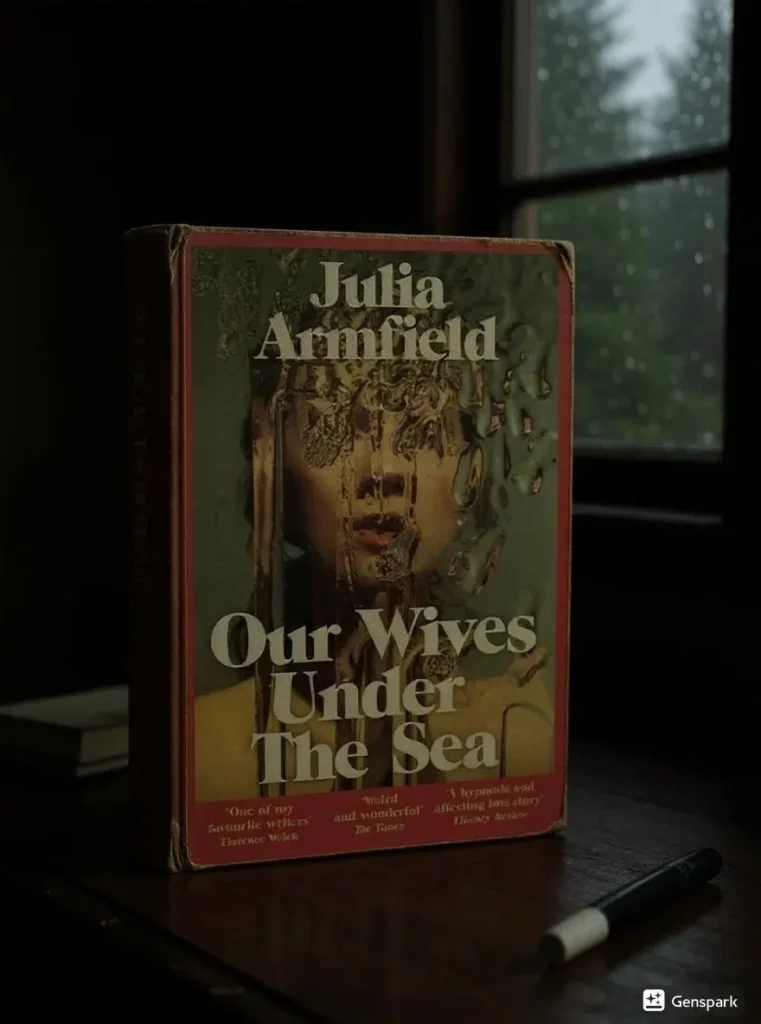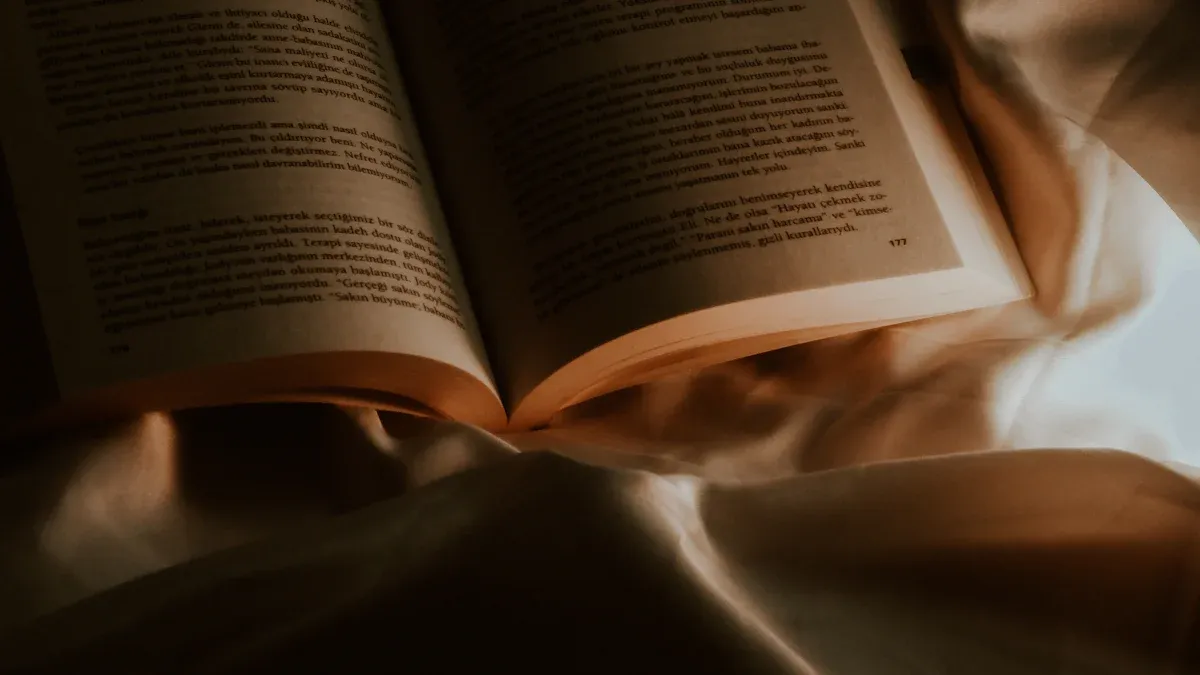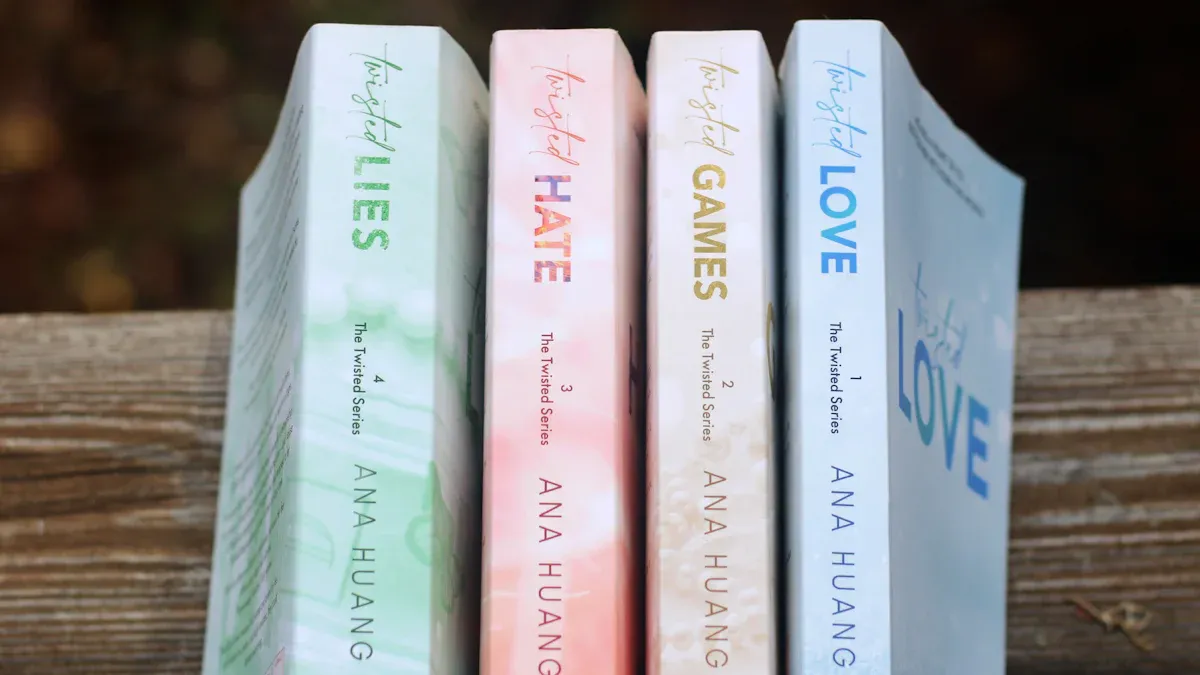I picked up “Our Wives Under The Sea” at 2 AM after scrolling through endless horror recommendations, and honestly, I couldn’t put it down until dawn broke. This book has been praised as exceptional queer horror that slowly rearranges your emotions through growing tension and terror while being incredibly tender. As someone who’s devoured over 3,000 books in my reviewing career at Dionysus Reviews, I can confidently say this novel hits different than anything I’ve read this year.
Armfield crafts a haunting story about Leah, a marine biologist who returns from a deep-sea mission fundamentally changed, and her wife Miri, who watches helplessly as their relationship transforms. The novel follows this married couple living in England, where Leah works for an organization called The Centre and suffers intense physical and behavioral changes after her expedition. What starts as domestic unease spirals into body horror that made my skin crawl.
The book’s genius lies in its restraint and atmospheric buildup. The plot is daringly static, with two young women stuck in their apartment where they remain almost until the novel’s end. This intimate setting becomes a pressure cooker for grief, love, and transformation that left me emotionally drained yet craving more.
Key Takeaways:
- Atmospheric queer horror that blends domestic drama with body horror elements
- Dual narrative structure alternating between Miri’s present-day perspective and Leah’s submarine journal entries
- Ocean depths serve as both literal setting and psychological metaphor for grief and change
- Genre-defying work that challenges conventional horror and speculative fiction boundaries
- Character-driven narrative focusing on relationship dynamics and personal transformation
Basic Book Details:
- Publishing Information: March 3, 2022 by Flatiron Books (US) / Pan Macmillan (UK)
- Genre: Queer Gothic Horror, Literary Fiction, Speculative Fiction
- Plot: Marine biologist returns changed from deep-sea mission, testing her marriage
- Series Information: Standalone novel
- Page Count: 256 pages
- Main Characters:
- Miri: Grant writer dealing with her wife’s transformation and mysterious absence
- Leah: Marine biologist who returns from deep-sea expedition fundamentally altered
An Atmospheric Dive Into Queer Gothic Horror
Reading “Our Wives Under The Sea” felt like being pulled into dark waters myself. The book opens with an unforgettable line that sets the tone perfectly: “The deep sea is a haunted house: a place in which things that ought not to exist move about in the darkness”. This isn’t your typical horror novel screaming for attention with cheap scares.
Instead, Armfield builds dread through small, intimate moments. I found myself holding my breath as Miri describes Leah sitting in the bathtub for hours, her skin taking on that drowned texture. The horror here is subtle, creeping under your skin like saltwater seeping through cracks.
Julia Armfield’s Literary Evolution From Salt Slow To Deep Sea Narrative
Julia Armfield was born in London in 1990 and holds a Masters in Victorian Art and Literature from Royal Holloway University. Her debut collection “Salt Slow” established her as a master of weird fiction exploring women’s bodies and transformations. The collection was shortlisted for the Sunday Times Young Writer of the Year Award.
What strikes me about Armfield’s evolution is how she’s refined her voice. Where “Salt Slow” felt experimental and sharp-edged, “Our Wives Under The Sea” shows mature restraint. She’s learned to let silence and space do the heavy lifting, creating atmosphere through what’s left unsaid.
The transition from short stories to novel form suits her perfectly. This book breathes with the rhythm of tides, allowing characters and emotions to develop naturally. I’ve read both works multiple times, and the growth in her craft is undeniable.
Ocean Depths As Psychological Metaphor And Structural Foundation
The ocean in this novel isn’t just setting—it’s character, metaphor, and structural foundation rolled into one. Armfield uses oceanic imagery to explore the depths of grief and love with precision that took my breath away.
The pacing mirrors ocean currents, with reveals arriving at perfect moments that keep you constantly on edge while aching for the relationship. I found myself thinking about pressure and darkness long after closing the book. The way Armfield connects literal deep-sea exploration with emotional excavation is brilliant.
Each chapter feels like descending another layer deeper into an abyss. The book’s structure mirrors oceanic zones—from the sunlit surface of memory down to the lightless depths where truth lives. This isn’t accidental; it’s masterful craft that other contemporary horror writers should study.
Dual Narrative Structure And Character Development Analysis
| Narrative Element | Miri’s Perspective | Leah’s Journal |
|---|---|---|
| Timeline | Present day, post-mission | During submarine expedition |
| Focus | Domestic life, waiting, change | Scientific discovery, isolation |
| Emotional Tone | Anxiety, love, helplessness | Wonder turning to horror |
| Revelation Style | Gradual realization | Direct experience |
The dual narrative structure creates perfect tension between knowing and not knowing. I appreciated how Armfield doesn’t rush to connect the timelines, letting each voice develop its own rhythm and concerns.
Miri’s Perspective On Loss And Domestic Transformation
Miri’s sections gutted me emotionally. Watching someone you love change beyond recognition while feeling powerless to help—that’s real horror. Armfield captures the specific grief of losing someone who’s still physically present but fundamentally altered.
I connected deeply with Miri’s desperate phone calls to The Centre, seeking answers that never come. Her voice feels authentic and raw, never sliding into self-pity despite the circumstances. The domestic details—empty coffee cups, unchanged sheets, waiting by the phone—ground the supernatural elements in recognizable human experience.
The way Miri processes Leah’s transformation mirrors stages of grief without following them predictably. Armfield trusts readers to understand complex emotions without spelling everything out explicitly.
Leah’s Submarine Journal As Horror And Scientific Discovery
Leah’s journal entries start with scientific curiosity and professional excitement. Reading them, I felt like I was descending alongside her crew into unknown depths. The gradual shift from wonder to dread is masterfully handled.
What makes these sections work is Armfield’s research. The scientific details feel authentic without becoming dry exposition. Leah’s voice as a marine biologist comes through clearly, making her eventual transformation more impactful.
The horror in these sections builds through accumulation rather than shock. Strange sounds, equipment malfunctions, crew behavior changes—each element adds pressure until something has to break. When it does, the consequences feel inevitable rather than arbitrary.

Thematic Exploration Of Grief And Relationship Metamorphosis
Reading this book during a period of personal loss hit differently than I expected. Armfield doesn’t offer easy comfort or resolution. Instead, she explores how people change through trauma and whether love can survive fundamental transformation.
The central question haunts every page: Can you love someone who becomes unrecognizable? I’ve thought about this question for weeks since finishing the book, and I still don’t have answers.
Body Horror As Metaphor For Emotional Distance And Change
| Transformation Type | Physical Manifestation | Emotional Parallel |
|---|---|---|
| Skin texture changes | Drowned, waterlogged appearance | Emotional unavailability |
| Behavioral shifts | Sitting in bathtubs, silence | Withdrawal from intimacy |
| Dietary changes | Craving salt, refusing normal food | Rejecting shared experiences |
| Communication breakdown | Speaking only of ocean depths | Inability to connect emotionally |
The body horror never feels gratuitous or exploitative. Every physical change reflects emotional distance or psychological transformation. Armfield uses Leah’s alterations to externalize grief’s internal damage.
What impressed me most was the restraint. Lesser writers might have pushed the horror further, but Armfield knows that suggestion often works better than explicit description. The changes feel real and disturbing without becoming absurd.
Queer Domesticity Versus Adventure Narrative Tension
The contrast between Miri’s domestic waiting and Leah’s oceanic adventure creates fascinating tension. Traditional adventure narratives celebrate exploration and discovery, but here, adventure becomes trauma that threatens home stability.
Armfield subverts expectations by making the “exciting” expedition traumatic while finding drama in domestic spaces. Miri’s experience staying home proves just as challenging as Leah’s underwater journey, maybe more so.
This inversion says something profound about whose stories get told and valued. The wife waiting at home experiences her own transformation, equally valid and important as the explorer’s journey.
Literary Craft And Genre-Blending Techniques
After reviewing horror fiction for two decades, I recognize when someone’s doing something genuinely new. Armfield blends genres seamlessly—literary fiction’s character depth, horror’s atmospheric dread, speculative fiction’s imaginative concepts, and queer fiction’s relationship focus.
The book has been recognized as a best book of the year by NPR, The Washington Post, Lit Hub, and multiple other publications, and was a finalist for the Lambda Literary Award. This recognition reflects its cross-genre appeal and literary quality.
Ocean Layer Symbolism And Narrative Pacing Strategy
| Ocean Zone | Symbolic Meaning | Narrative Function |
|---|---|---|
| Sunlight Zone | Surface memories, normal life | Establishing relationship baseline |
| Twilight Zone | Growing uncertainty, first changes | Building tension and unease |
| Midnight Zone | Deep trauma, fundamental change | Climactic revelations |
| Abyssal Zone | Complete transformation, alien territory | Resolution and aftermath |
The book’s structure mirrors oceanic zones, with each section diving deeper into darker territory. This isn’t accidental—Armfield uses this progression to control pacing and emotional intensity perfectly.
Reading felt like free-diving, holding my breath as characters descended into unknown depths. The pressure builds gradually, then releases in moments of devastating clarity.
Comparative Analysis With Contemporary Gothic And Speculative Fiction
Comparing this to contemporary works like Carmen Maria Machado’s “Her Body and Other Parties” or Ottessa Moshfegh’s “My Education,” Armfield holds her own among the best weird fiction writers working today. She shares their interest in women’s bodies and transformations but brings her own oceanic sensibility.
Unlike typical cosmic horror that makes humans insignificant, Armfield’s horror emerges from intimate relationships and personal change. The universe isn’t indifferent—it’s personally, specifically cruel to people we love.
The book reminded me of Toni Morrison’s approach to supernatural elements: integrated so naturally into emotional reality that they feel inevitable rather than imposed. This takes serious skill to pull off convincingly.
Pros
The atmospheric writing creates genuine dread without relying on cheap scares or gore. Armfield’s prose flows like water, carrying readers along even through difficult emotional territory. Character development feels authentic and complex, avoiding simple victim/survivor narratives.
The dual timeline structure builds suspense effectively while allowing deep character exploration. Scientific details add authenticity without becoming dry exposition. The ending resists easy answers while providing emotional resolution.
Genre-blending works seamlessly, creating something fresh rather than confused. Queer representation feels natural and integrated rather than performative. The book works on multiple levels—as horror, literary fiction, and relationship study.
Cons
Pacing occasionally slows during Miri’s domestic sections, though this might be intentional given her waiting experience. Some readers might want more explicit answers about what happened underwater, though ambiguity serves the story’s themes.
The ending won’t satisfy readers seeking traditional resolution or closure. Character development sometimes prioritizes atmosphere over action, which may frustrate plot-driven readers. Limited supporting characters mean the story rests heavily on the central relationship.
Final Verdict
“Our Wives Under The Sea” succeeds brilliantly as atmospheric horror and relationship study. Armfield has created something genuinely original in a genre crowded with imitators. The book stays with you long after reading, which marks truly effective horror.
I recommend this for readers who appreciate literary horror, queer fiction, and stories prioritizing character over plot. Don’t expect traditional horror beats or easy answers. Expect to be moved, disturbed, and changed by the experience.
This isn’t comfort reading, but it’s rewarding for readers willing to dive deep into dark emotional waters. Armfield has established herself as a major voice in contemporary weird fiction.
Dionysus Reviews Rating: 7/10
Sip The Unknown—Discover Stories You Never Knew You’d Love!
Dionysus Reviews Has A Book For Every Mood
Biography & Memoir
Fiction
Mystery & Detective
Nonfiction
Philosophy
Psychology
Romance
Science Fiction & Fantasy
Teens & Young Adult
Thriller & Suspense
Frequently Asked Questions
What happens to Leah during her deep-sea mission?
Leah’s submarine expedition encounters mysterious phenomena in the ocean depths that fundamentally alter her physically and psychologically. The mission, originally planned for three weeks, extends indefinitely while The Centre provides no communication to Miri.
When Leah finally returns, she exhibits drowned-like skin texture, spends hours in bathtubs, and speaks primarily about oceanic depths, suggesting profound transformation from her underwater experience.
How does the dual narrative structure affect the storytelling?
The alternating perspectives between Miri’s present-day experience and Leah’s submarine journal create mounting tension through contrasting knowledge. Readers gradually piece together what happened underwater while simultaneously experiencing Miri’s confusion and desperation.
This structure mirrors the relationship’s communication breakdown—two people experiencing the same events from completely different emotional and temporal positions.
What makes this book different from typical horror novels?
Rather than relying on jump scares or graphic violence, Armfield builds horror through intimate domestic moments and gradual character transformation. The fear emerges from watching someone you love become unrecognizable, not from external threats.
This approach creates lasting psychological unease rather than momentary fright, making the horror more personal and emotionally resonant.
How does the ocean symbolism function throughout the novel?
The ocean operates on multiple symbolic levels—representing the unconscious mind, grief’s depths, and the unknown aspects of people we love. Ocean zones mirror the narrative structure, from surface-level normalcy down to abyssal transformation.
Water imagery appears constantly in domestic scenes, suggesting that oceanic forces have invaded the home space and relationship.
Who would most appreciate this book?
Readers who enjoy atmospheric horror, literary fiction with speculative elements, and character-driven narratives about relationships under stress will find the most value. The book particularly appeals to those interested in queer fiction, weird literature, and stories that prioritize emotional complexity over traditional plot structure.
Fans of Carmen Maria Machado, Kelly Link, or Toni Morrison’s supernatural works would likely appreciate Armfield’s approach.









